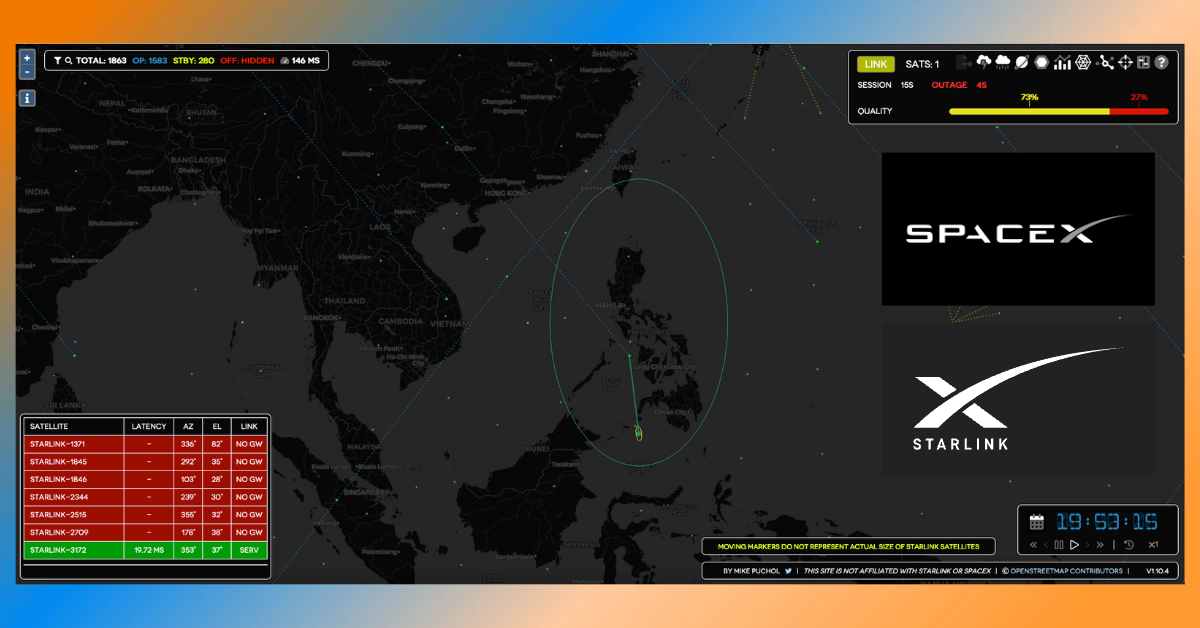Many were jumping in jubilation (sort of) when the news of SpaceX‘s satellite internet constellation company Starlink had its application for registration as a Value-Added Service (VAS) Provider with the National Telecommunications Commission (NTC) approved last Friday, 27 May 2022.
Prior to this nod from the NTC, Starlink Internet Philippines, Inc. has been awarded a Satellite Systems Provider and/or Operator (SSPO) Provisional Certificate of Accreditation (No. 2022-001) by the Department of Information and Communications Technology (DICT) last 20 May 2022.
“The NTC is steadfast in helping ensure that roll-out of Starlink’s internet access services will be done expeditiously and professionally. Starlink is expected to cover villages in urban and suburban areas and rural areas that remain unserved or underserved with internet access services. The service is expected to bring cost-effective internet access in these areas,” according to NTC Commissioner Gamaliel Cordoba.
The local counsel of SpaceX noted that Starlink’s VAS license was issued thirty (30) minutes after they submitted the complete requirements to the NTC (how we wish the renewal of other NTC permits and licenses also takes around that same turnaround).
What is Starlink?
Engineered by billionaire Elon Musk’s Space Exploration Technologies Corp. (SpaceX), the company started launching Starlink satellites in 2019 to build a satellite internet constellation. As of this writing, there are already more than 2,500 Starlink satellites in Low Earth Orbit (LEO).
The company promises to provide high-speed, low-latency broadband internet across the planet. Generally, Starlink is ideal for areas where connectivity is unavailable and/or unreliable (sounds like most parts of the Philippines).
These small satellites communicate with ground transceivers using the Ka-band.
Starlink Changing the Telco Landscape of the Philippines?
Someone asked on her social media account if the entry of Starlink will change the telco landscape of the Philippines? For now and in the near future, I don’t think so.
Filipinos need to understand that Starlink is not even considered a telco — technically and legally speaking here in the Philippines. Without going through the nitty-gritty of the technicalities and even legalities of things, telecommunication companies in the Philippines need to have a congressional franchise before they could even operate. On the other hand, Internet Service Providers (ISPs) like Starlink only need to have a Value-Added Service (VAS) Provider license or permit under RA 7925 (Public Telecommunications Policy Act of the Philippines).
Sorry to say, but Starlink is not for everyone. In February 2021 when the company started accepting reservations from the Philippines for a (then) possible 2022 operations, I signed up and paid US$99 (around PHP5,000) upfront. If you’re not techie enough, I know you will say that I’m crazy to pay that amount without knowing how much and when the service will be. But at least, the deposit is refundable.
According to a US-based colleague who subscribed to Starlink just this year, the cost of the starter kit is now priced at US$499 (around PHP26,000 for the antenna, terminal, cables, etc.) and his monthly subscription is US$110 (PHP5,700) for an internet connection that gives him around 50-100 Mbps for download and 5-10 Mbps for upload. And since the service is satellite-based, there will be several times in a day where users may experience service interruptions/outages (for something like 5 to 30 seconds at most) depending on the location and position of the satellites overhead.
My personal take: Starlink is not for households in highly urbanized areas that have access to existing broadband, fiber, or even wireless Internet options. In addition, the Starlink antenna needs to operate in an area with fewer (or zero) obstructions and a clear line of sight with the satellites — and this is not how we describe highly urbanized places in the country.


